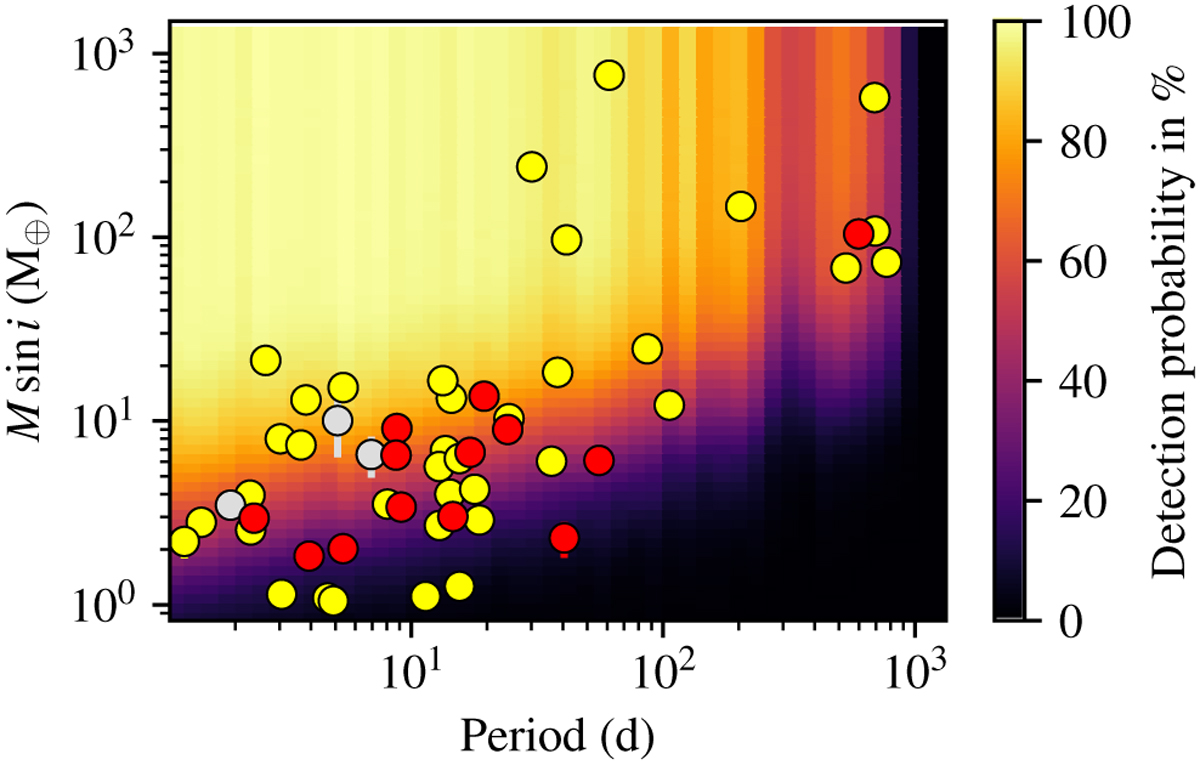Fig. 10

Download original image
CARMENES detection probability map in the period-mass plane derived from the observations of 238 targets. The detection probability is calculated using each target mass, and the average of all detection probabilities for the individual grid points is shown in the period-planet mass plane as a colour map. For example, a 10% detection probability for 238 targets indicates that the survey data can detect the respective planet in approximately 24 targets. Yellow circles indicate CARMENES planet detections and planet detections from other instruments that are confirmed by CARMENES data; grey circles planet candidates; and red circles planet detections from other surveys for which no sufficient CARMENES measurements are available to confirm them. The five planets in the low-probability detection region (<10%) are Teegarden’s Star b and c, YZ Cet c and d, and Wolf 1069 b, all of which are Earth-mass planets with host stars of less than 0.2 M⊙, thus suggesting that such planets are very abundant.
Current usage metrics show cumulative count of Article Views (full-text article views including HTML views, PDF and ePub downloads, according to the available data) and Abstracts Views on Vision4Press platform.
Data correspond to usage on the plateform after 2015. The current usage metrics is available 48-96 hours after online publication and is updated daily on week days.
Initial download of the metrics may take a while.


